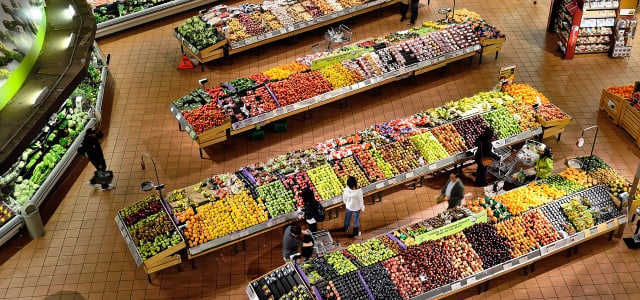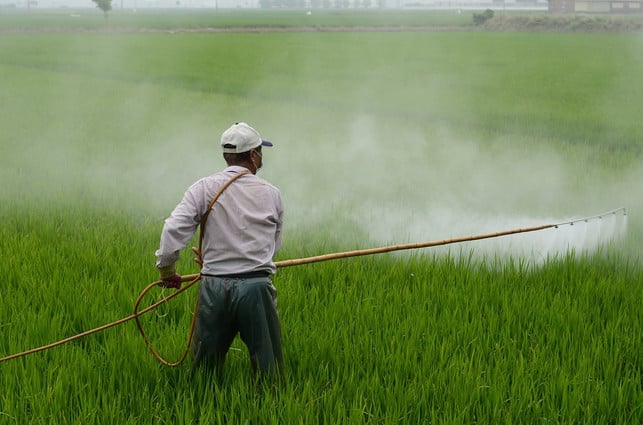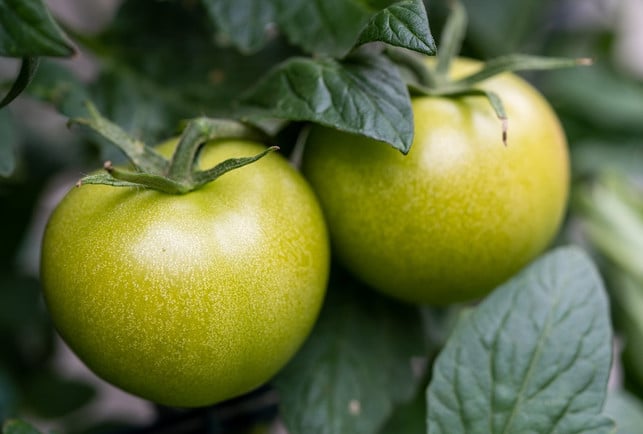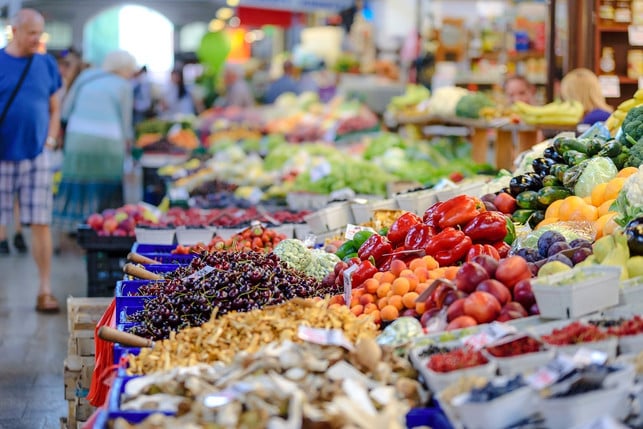
Some pollutants in food are introduced by humans, others are of natural origin. We’ll explain what they are and how you can get around them.
Pollutants that end up in our food due to human influence include antibiotics, dioxins, heavy metals and pesticides. They can be found in meat, fish, fruits and vegetables. Natural pollutants usually benefit the plants themselves because they protect them from predators. These include, for example, hydrogen cyanide and phasin.
With a few tricks you can prevent the absorption of harmful substances through food or render the poison harmless – we’ll show you how.
Harmful substances in food: Antibiotics in meat products
Antibiotics are found in food, along with a number of other harmful substances. Antibiotic residues are particularly found in products from factory farming. This includes meat from pigs, chickens and cattle. Many breeders give their animals this remedy to prevent various pathogens from spreading.
The problem is that farmers regularly feed antibiotics and bacteria become resistant. And that’s exactly how it is with humans. This is particularly bad if someone is dependent on antibiotics because he or she is chronically ill or has a weak immune system. When the antibiotics no longer work for these people, their health problems become harder to treat.
Resistant bacteria even get onto vegetables through the animal manure spread on the fields.
Dioxin in fatty animal products
Dioxin is mainly found in animal products with a high fat content. The reason for this is that the substance is particularly deposited in fatty tissue. Foods that may contain the contaminant include dairy products, meat, fish and eggs. According to Stiftung Warentest, meat and fish contribute more to the overall dioxin burden than eggs.
Dioxin enters the air and soil through processes such as burning waste or industrial processes such as metal extraction. Farm animals ingest the substance. The pollutant is very long-lasting and breaks down only slowly. The substance is long-lasting both in the organism and in nature, and is very toxic even in low concentrations. Dioxin can also be found in fats that are added to animal feed.
In animal experiments, the health consequences found included weight loss, liver damage and metabolic diseases. There are various dioxin compounds, of which the compound 2,3,7,8-TCDD is particularly harmful.
Dioxins are classified as carcinogenic by the WHO. According to the European Food Safety Authority, sperm quality can also be negatively affected by dioxin. Mother-child studies show that in mothers who have a normal but higher amount of dioxins in their bodies, the development of their children can be disturbed or delayed.
Pollutants in fish: heavy metals
Heavy metals are mainly found in fish. These include lead and cadmium. Fish absorb the substances in waterways and seas, where the toxic substances end up through industrial and car exhaust fumes. Fish that are particularly fatty absorb heavy metals. Foods that may be contaminated with the pollutant include halibut, pike and tuna. Depending on the dose, heavy metals can cause headaches or damage nerves and organs.
But heavy metals can also be found in fruits and vegetables. This is often the case when growing fruit on busy roads or locations contaminated with lead. Even if retailers display fruit on the sidewalk, the food displayed there can be contaminated with pollutants.
Harmful substances in fruits and vegetables: fertilizer

(Photo: CC0 / Pixabay / wuzefe)
The use of synthetic chemical pesticides around the world to increase yields is nothing new. But these pesticides or fertilizers can also end up as pollutants in your food by being deposited there. Pesticides can be detected particularly in imported fruit and vegetables, but also in coffee. Depending on the pesticide, they remain in the organism for different lengths of time.
You can read more about the risks here: Pesticides: What you need to know about herbicides, fungicides and insecticides.
Where do pollutants naturally occur in food?

(Photo: CC0 / Pixabay / WagnerAnne)
The pollutants presented so far enter the environment through humans and thus into the food. People want to produce more, so factory farming and the use of fertilizer are encouraged. Humans produce waste that has to be burned, which results in pollutants ending up in the air. These can also be found in food.
According to consumer advice centers, there are also natural pollutants in food. These often serve the plant to protect itself from predators. The toxins can usually be destroyed by heating the food. However, especially in children, a small amount of these substances is enough to cause poisoning. For adults, a larger amount is usually required.
Natural pollutants that occur in food include:
-
Hydrocyanic acid in apricot kernels or bitter almonds: Symptoms such as nausea, vomiting and shortness of breath indicate hydrogen cyanide poisoning. To do this, as an adult you have to consume 50 to 60 raw bitter almonds. In children, however, just five bitter almonds can cause serious poisoning. Bitter almonds are sometimes found in baked goods, but because they are heated in the oven and in small quantities, they are safe to consume.
-
Phasin in raw beans: Phasin belongs to the group of lectins. These protein compounds are found in many fruits and vegetables. The substance is particularly found in legumes such as raw kidney beans. The symptoms of poisoning range from nausea, abdominal pain and vomiting to bloody diarrhea, seizures and shock. Heat renders the protein harmless.
-
Solanine in green potatoes and tomatoes: Solanine is formed when potatoes are poorly stored and can be found in unripe tomatoes. Therefore, you should make sure to store potatoes so that they do not germinate. It is best to store them in a cool, dry and dark place. If the peel is eaten, it is best to only use fresh, undamaged potatoes. You should remove large areas of green and sprouting spots on potatoes. If tomatoes are still green, you should wait until they ripen to avoid consuming solanine. Solanine poisoning manifests itself in the form of vomiting, diarrhea and abdominal pain.
-
Oxalic acid in rhubarb, spinach, chard, beetroot, sweet potatoes, bamboo shoots and cocoa: Oxalic acid reduces the bioavailability of minerals, especially calcium, magnesium and iron. Disturbances in calcium metabolism can arise and have a negative effect on the kidneys. Children whose bones are still developing or older people whose bones are already deteriorating should be cautious about consuming oxalic acid.
-
Morphine in poppy seeds: Morphine belongs to the group of opiates, which are prescription painkillers. The side effects of morphine are varied and range from dependence to respiratory failure. Elevated morphine levels in poppy seeds are likely related to harvesting techniques. Manufacturers are working to reduce the morphine content in poppy seeds through improved manufacturing conditions. Until then, poppy seeds should not be consumed excessively (especially without heat treatment).
-
Phytic acid in whole grains and oilseeds: Phytic acid can also reduce mineral absorption (especially iron and zinc). However, you don’t have to do without whole grain products because they contain more nutrients overall compared to white flour products.
What can you do about harmful substances in food?

(Photo: CC0 / Pixabay / PhotoMIX Company)
By following a few tips, you can prevent yourself from consuming harmful substances through your food. Here is a little guide:
- Basically, you should wash your fruits and vegetables before eating them. This causes, among other things, residues of chemical-synthetic pesticides to dissolve. More tips here: Wash fruit properly: What to do about pesticides on the peel?
- In general, when you heat something, natural pollutants in food can be killed. This is the case, for example, with hydrogen cyanide, morphine and phasin. With phasin in beans, the poison is destroyed after 15 minutes of cooking. To avoid taking morphine, you can wash the poppy seeds beforehand and heat them in the oven for ten minutes at around 80 to 90 degrees top/bottom heat. If you bake a poppy seed cake, the morphine is also rendered harmless. The poison from hydrogen cyanide also evaporates from the food after cooking (boiling point at 26 degrees).
- When it comes to organic fruit, vegetables or coffee, the use of chemical-synthetic pesticides is generally avoided.
- According to the consumer advice center, significantly fewer antibiotics are used in organic meat products because organic animal husbandry is less performance-oriented. EU legislation on organic farming severely limits the use of antibiotics. In addition, many organic farmers consciously decide against the use of antibiotics. By buying organic meat, organic eggs and organic milk, you can contribute to a significant reduction in the use of antibiotics – it is of course better if you generally reduce the consumption of animal products.
- By avoiding meat products, you have one less source of harmful substances into your body. You can avoid antibiotics and dioxin this way. With a diet based on organic and vegan products, you can reduce the risk of harmful substances in food and also support organic farming.
- When you grow your own fruits and vegetables, you can control exactly what ends up on your plate.
- Find out what’s in your food: You can use an app to check which ingredients and harmful substances are contained in your food. In addition to Codecheck, there are also other ingredient apps that check ingredients for you.
Read more on Techzle\.com:
- Plastic packaging: How many pollutants end up in food?
- Deciphering the code on food: This is how it works
- How banned pesticides still end up on our plates
Edited by Annika Reketat
** marked with ** or orange underlined Links to sources of supply are partly partner links: If you buy here, you are actively supporting Techzle\.com, because we then receive a small part of the sales proceeds. More info.